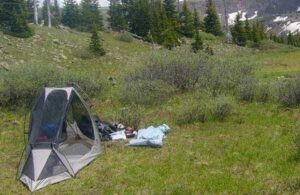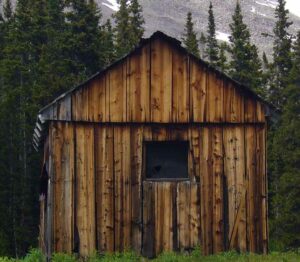OUTWESTWOODS
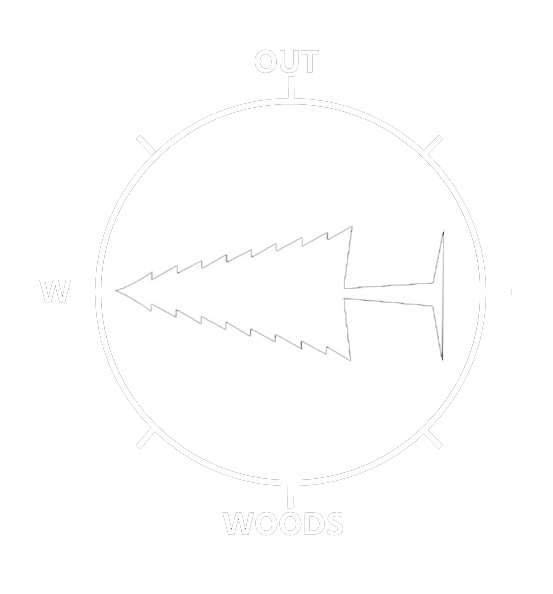
Ultra-Light Lure Fishing Tips
While fly fishing may be all the rage, when it comes to small Colorado mountain streams, my personal preference leans towards ultra-light lure fishing. These streams are often narrow, averaging about 6 feet, with dense vegetation and obstacles that make fly casting a challenge. Lure fishing, on the other hand, offers distinct advantages.
I find lure fishing more appealing for several reasons. Firstly, the gear required for lure fishing is generally more affordable and lightweight. This allows for easier maneuverability through the woods, akin to hunting. Unlike fly fishing, I don’t have to lug around fishing waders, which can be cumbersome and impractical for backpacking trips. Mastering the art of lure fishing becomes a valuable skillset in such scenarios.
To help you get started and quickly embrace ultra-light lure fishing, I’ve compiled some handy tips. With a little practice, you might even become an instant expert in this exciting angling technique.
Colorado’s Ultimate Fishing Map provides the locations and statistics of the top 800 lakes and 250 streams found throughout Colorado.
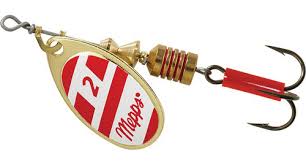
Ultra-Light Lure Fishing Gear
Ultra-light lure fishing doesn’t require a significant investment. All you need is an affordable ultra-light fishing rod and reel set, which can be obtained for under $100. Additionally, a selection of lures, forceps, a stringer, and a fishing license are essential.
In terms of lure choices, I personally find Mepps and Martin Panthers to be highly effective. Look for lures with a touch of red, available in gold, silver, and black variations. As a general rule, use dull-colored lures (black, gold) on bright days and opt for flashy colors (silver) on darker days.
Determining the size of the lure or spinner blade can be counterintuitive. Larger blades, such as a #2, perform better in slower water or still lakes. On the other hand, smaller blades, like a #1 or even a smaller #0, work well in faster-moving water, allowing for a more natural presentation.
For fishing line, 4-pound test is generally sufficient for most Colorado streams and lakes, though slightly heavier lines can also be used.
Surgical forceps are handy for removing the lure from a fish’s mouth. Fortunately, fish tend not to swallow lures deeply, making removal easier. To calm a fish before removing the hook, gently turn it on its back, inducing a sleep-like state. Once the hook is swiftly removed, the fish can be safely returned to the water.
If you plan on keeping fish for consumption, having an extra stringer at your campsite is a practical idea. It provides a convenient way to transport and store your catch.
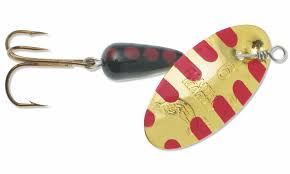
Locating The Fish
In the cold, fast-flowing streams of Colorado, trout exhibit intelligent behavior by avoiding continuous swimming in the frigid water. However, Rainbow Trout can be an exception, often found in the fast ripples of the cold water during the heat of the day.
Trout employ a clever feeding strategy by positioning themselves in slow water areas while extending their noses into the faster current, allowing the stream to bring food to them. Unlike a scene from “Jaws,” where fish are constantly chasing food, such behavior would require excessive energy in a fast and cold stream.
To locate trout, focus on identifying the seam between slow and fast water. This is where you should present your lure, mimicking the appearance of food being carried by the stream. Given the trout’s split-second decision-making, make it easy for them to strike the lure.
Ideal spots to find trout are behind rocks, logs, or bends in the stream, where slow water pockets form. Remember that the better holes tend to hold larger and more cunning fish.
Now it’s Time to Hunt
With knowledge of where the fish are located, the next crucial step is to quietly position yourself for casting. This step holds immense significance, especially when targeting that elusive trophy fish.
Exercise extreme caution with your footsteps, as trout possess sensitive nerves throughout their bodies. Any ground vibrations can alert them to potential danger. Maintaining the element of surprise is key in lure fishing, so ensure that the element of surprise remains on your side.
It’s important to recognize that these streams are small, providing an advantage to the trout. Stay focused and adapt your approach accordingly to outsmart these cunning creatures.
Now it is Time to Golf – The Perfect Cast
So now you are ready, you have located the fish, noting where the slow water meets the fast water, with stealth you moved down to the creek’s side getting into position.
Now get ready to make that perfect surprise cast!
To me this is like golf, or I find the fun part of ultra-light lure fishing is presenting the lure with a perfect cast.
This first cast is so important as all the surprise is on your side and that grand daddy trout suspects nothing.
Many times you are trying to get your lure to the far bank under a bush, around a rock, or something. To help I prefer to have my lure hanging a couple inches from the top of my pole to improve my casting accuracy.
The nice thing about an accurate cast is you keep your lure out of the trees.
If you find yourself hung up in a tree (and you will) that fishing hole will lose all if not most of its productivity for a period of time.
Then there is the bonus of not losing your lure in the trees, like golf a nice day is coming back with all your balls or this case your lures.
Now, if that first cast does not work, do not be afraid to try a few more times in that hole. You might not catch the grand daddy but a few smaller aggressive trout might note care as much.
For me, after 4 or 5 cast, I am off to the next hole whether I catch fish or not, because I will hit this hole on the way back, or I like to say the back nine, hoping for that grand daddy.
Move, Move, Move
The art of being a successful ultra-light lure fisherman lies in constant movement.
After locating the fish, stealthily positioning yourself, and delivering the perfect cast, it’s crucial to maintain the element of surprise by continuously moving.
Embrace the philosophy of constant movement to keep the element of surprise in your favor. Don’t hesitate to leave a productive fishing hole, as you can return to it in a few hours for even more angling excitement.
Personally, I find great enjoyment in moving along the stream while fishing, akin to a pleasant hike. This way, I never know what other exciting sights I might encounter, prompting me to keep my camera readily accessible.
Remember, the key to success lies in perpetual motion, maximizing your chances and ensuring a dynamic and rewarding fishing experience.
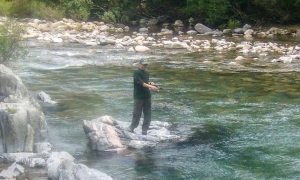
Different Casting Techniques
When fishing alongside a stream, I employ three essential casting techniques for optimal results.
First, I cast along the same side of the stream I’m positioned on, either upstream or downstream, depending on the direction I’m heading or haven’t explored yet. Remember, surprise is key. If casting upstream, ensure you reel in your lure at the same speed as the current.
Second, I’ve found that the most productive yet challenging cast is along the far bank, particularly in fast water. This technique allows the water’s current to effectively carry your lure downstream, positioning it to “swing” through a hole.
Here’s how it works: Cast at a 45-degree angle upstream, targeting the far bank as closely as possible. Keep your reel open, allowing the line to flow freely. Although you may worry about your lure getting snagged, have faith that the water has cleared a path.
What makes this technique even more effective is that your lure will swiftly descend to deeper waters. Now comes the key moment—the “swing.” As the lure passes you, even at a 45-degree angle downstream, snap your reel shut. This action will immediately tighten the line, causing the lure to swing across the stream toward your side of the bank, downstream.
Be prepared, as many fish tend to strike the lure right at the moment of the snap. This technique is ideal for “swinging” your lure behind significant obstructions like rocks, where calm water and fish are often found.
Imagine it as orchestrating your lure’s graceful “swing” through the seams between faster and slower currents, maximizing your chances of a successful catch.
Finally, before moving on, I always make one last cast back behind me, in the direction I came from. You never know when a clever fish might have slipped by unnoticed. Although these fish are typically smaller in size, it’s worth the effort to cover all angles and explore every opportunity. Casting behind you adds a final touch to your fishing excursion, leaving no stone unturned in your pursuit of these elusive creatures.
Finding an Amazing Colorado Mountain Lake to Fish
It may sound unbelievable, but I’ve had the incredible fortune of visiting numerous Colorado mountain lakes teeming with trout. Picture this: as you approach the bank, the crystal-clear water reveals dozens of trout serenely swimming past you. It’s a sight worth any hiking endeavor.
Often, after a day of backpacking, I stumble upon these hidden gems and have them all to myself for an entire week. A distance of around 4 or 5 miles from the road is usually sufficient to escape fishing pressures, if any exist. However, let’s not underestimate the time investment required to reach these pristine locations—it can take several hours of hiking.
Here’s some good news: I’ve curated Colorado’s Ultimate Stream Fishing Map, featuring over 1,000 locations for you to explore. Whether you’re seeking lakes or streams, this map will guide you to stunning destinations on public lands. Prepare to embark on unforgettable fishing adventures as you navigate through the beauty of Colorado’s wilderness.
Locating the Fish in a Lake
When it comes to fishing in the Colorado high country, there are similarities between fishing in a stream and fishing in a mountain lake.
When you’re on a mountain lake, pay attention to the side of the lake that borders the mountain. Look for areas where rock boulders have tumbled into the water. Take a moment to observe the rocks in the picture below. These rocks serve as hiding spots for fish, as well as sources of food.
On the opposite side of the lake, you’ll typically encounter more silt and fewer fish. However, you may still spot the occasional fish swimming by.
It’s worth noting that small ponds, especially beaver ponds, gradually fill with silt over time, which can impact the fish population.
On the other hand, a lake brimming with rocks will generally provide good fishing opportunities throughout its expanse. These rocky areas create ideal habitats for fish and increase your chances of a successful catch.
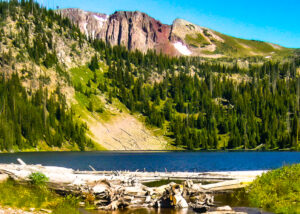
The opposite shore of the lake, where it meets the mountain, possesses a significant advantage in the form of a flowing stream that brings in fresh water and sustenance. Similar to a stream, this inflow of water can create a current within the lake.
It’s worth noting that just like fish thrive in a stream, they also prefer the transitional zone between fast and slow currents within a lake.
Lastly, let us not overlook the point where the lake’s water exits. This particular section of the stream can be exceptionally fruitful and abundant in resources.
Casting Your Lure in a Lake
When I fish a high mountain trout lake using lures or a spinner, my approach mimics that of fishing in a stream—I keep moving.
Typically, I begin by positioning myself along the edge of one side of the shore, often near a rocky area.
My technique involves five fundamental casts. Firstly, I cast straight down the shore in the direction I’m moving.
Secondly, I cast at a 45-degree angle towards the same side, followed by a straight cast directly outward. Then, I cast at a 45-degree angle away from the side I came down, and finally, I cast straight along the shore I arrived from.
After completing these casts, I move approximately 50 feet down and repeat the same sequence.
While casting, I keep an eye out for the depth at which the fish are suspended.
To determine this, I count the seconds as my lure sinks. I start with increments of 5 seconds, then 10, 15, and so on, until I locate the desired depth where the fish are situated. Often, trout have a preference for specific temperature ranges, so finding the correct depth helps me zero in on their location.
During the retrieval process, I occasionally vary the reeling speed to create a jerking effect on the lure. Alternatively, I may allow it to sink for an additional 5 seconds or more.
I don’t mean to boast, but when I go backpacking, I typically have no trouble catching a couple of fish for dinner in these trout-rich Colorado mountain lakes and streams. It’s only during these trips that I will take a fish or two.
After a long day of hiking, there’s nothing quite like savoring a delicious fried trout from a pristine mountain stream or lake.
Keep Your Lure Clean
Here’s a helpful tip: remember to closely monitor your lure every time you retrieve it. Streams and lakes often contain abundant moss and debris that lures can easily accumulate.
This debris can disrupt the natural movement of the lure, so it’s important to keep it clean and free from any unwanted materials.
Moreover, fish have a keen sense of their surroundings, and they may become suspicious if they detect anything unusual.
Freeing a Hung up Lure
The moment you feel your lure move unusual or get hung up do not do the natural thing of jerking on it. This will just drive those sharp hooks into whatever its is lodged in.
Instead, the moment you feel it get hung up stop reeling, loosen the line a bit, try to stay relaxed.
Wiggle the line like you do with a garden hose or in a whipping motion. This wiggle of the line will go down to the lure making the lure wiggle, hopefully wiggling it free.
You are not going to be able to free every lure, even the best of us lose a lure or two in these challenging Colorado small mountain streams.
Time of Day Does Matter
Mornings and late afternoons offer prime fishing opportunities, as the fish tend to be more active during these times. In the heat of the day, their activity level decreases.
Witnessing the trout rise and take notice of your lure during the sunset is an unforgettable experience.
If you find yourself fishing during the hot hours, it’s advisable to seek out shaded areas or deeper depths where the fish might be seeking refuge. Surprisingly, fish can also get sunburned, so they tend to avoid direct sunlight.
Additionally, some lakes offer fantastic night fishing opportunities. In Colorado, for example, Eleven Mile Reservoir is known for its exceptional night fishing, and it’s perfectly legal to engage in this activity.
Tying a Hangman’s Knot.
The hangman’s knot is a highly recommended knot for securing your lure.
Learning the hangman’s knot is invaluable, given its versatility and ease of tying.
The adjustable loop created by this knot is especially advantageous for lures, as it allows for free movement.
In case your lure becomes snagged, it’s important to loosen the knot rather than exert force on the line. Tugging on the line could tighten the loop around the lure, making it more difficult to retrieve.
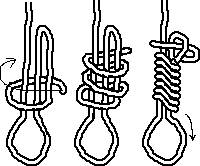
To tie a hangman’s knot, you can find numerous online videos for detailed instructions. However, the basic steps can be summarized as follows
1. Begin by threading your fishing line through the eye of the hook, forming a loop with the tag end
2. Wrap the tag end around the doubled fishing line, making approximately 5 or 6 turns around the loop.
3. Pass the tag end through the end of the loop and pull it tight.
4. Adjust the size of the loop, ensuring there is ample room for the lure to move freely.
5. Trim off any excess line beyond the knot.
Remember, visual references from instructional videos can provide clearer guidance on tying the hangman’s knot.
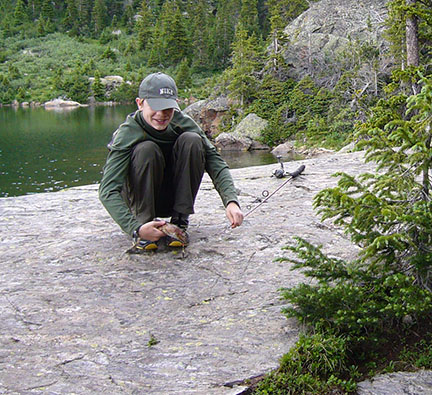
My son fishing Harvey Lake Colorado. One of those amazing Colorado mountain lakes I mentioned above.
“Get Out There”
Do not forget to check out Colorado’s Ultimate fishing map
Colorado’s Ultimate Fishing Map provides the locations and statistics of the top 800 lakes and 250 streams found throughout Colorado.
More To Discover At OutWestWoods
Discover essential tips for your outdoor adventures in Colorado’s backcountry:
Backpack Equipment List: Get a comprehensive checklist for your backcountry backpacking needs.
Ultra-Light Fishing: Learn a lightweight fishing technique tailored for Colorado’s wilderness.
Must-Visit Places: Explore remarkable destinations in Colorado’s backcountry.
Safety Tips and Tricks: Stay secure with valuable insights on outdoor safety.
Enjoy your Colorado adventure with these handy tips!
With decades of experience, I’ve crafted the ultimate backpacking equipment list for Colorado’s high country.
Discover the perfect fishing experience in Colorado’s small mountain streams with ultra-light lure fishing techniques. Learn my tried and tested methods for guaranteed success.
Experience the wonder of my extensive backpacking adventures in Colorado’s high country. Countless hours of research and exploration led me to discover some truly amazing locations.
Embark on a journey through my extensive backpacking adventures in Colorado’s high country. Countless hours of research and exploration unveiled truly amazing locations that will leave you in awe.
Please see Eseta Mines for jewelry, displays, crystals, mine tours, mine location and filing services.
